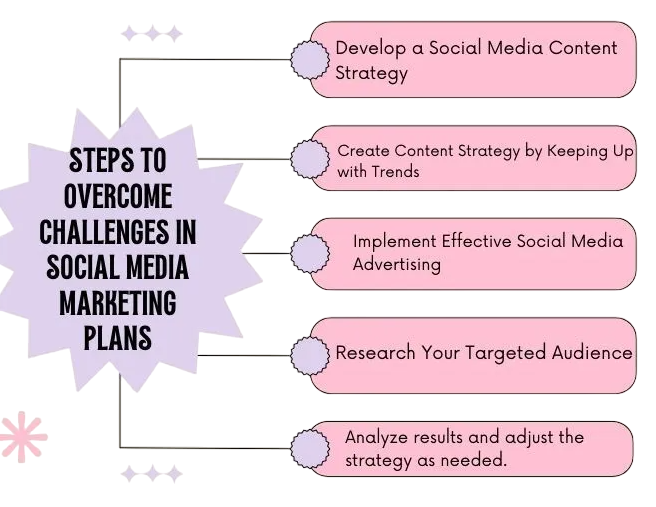
- Introduction to Social Media Marketing
- The Evolution of Social Media Marketing
- Why Social Media Marketing Matters
- Core Components of Social Media Marketing
- Popular Social Media Platforms and Their Uses
- How to Develop a Social Media Marketing Strategy
- Benefits of Social Media Marketing
- Common Challenges in Social Media Marketing
- Best Practices for Effective Social Media Marketing
- Conclusion
Introduction: What is a Social Media Marketing Strategy?
Social media marketing, or SMM, is a way for businesses to use platforms like Facebook, Instagram, and Twitter to promote their products, services, or brand. It focuses on engaging with customers and building a loyal community by sharing interesting content and updates on these social networks a relationship-driven approach explored in Digital Marketing Training, where learners master the art of fostering trust, leveraging user-generated content, and maintaining consistent engagement rhythms to transform audiences into advocates across platforms like Instagram, Facebook, and LinkedIn. The goal is to create strong marketing and branding strategies that connect with audiences. One major advantage of social media marketing compared to traditional methods is the ability to interact with your audience in real time. Businesses can quickly respond to questions, gather feedback, and change their strategies based on audience reactions. Because of this, social media marketing has become a crucial tool for companies of all sizes. It allows them to connect with potential customers in a more personal and immediate way. By using social media effectively, businesses can improve their visibility and build lasting relationships with their customers.
Ready to Get Certified in Digital Marketing? Explore the Program Now Digital Marketing Online Training Offered By ACTE Right Now!
The Evolution of Social Media Marketing
The rise of various social media platforms, such as Facebook, Twitter, Instagram, LinkedIn, and TikTok, has completely transformed marketing. What began as simple tools for communication have evolved into complex spaces where brands and consumers share ideas and connect daily. Initially, social media focused mainly on sharing organic posts and word-of-mouth recommendations. However, it has grown significantly to include paid ads, influencer partnerships, chatbots, and detailed targeting options evolutionary shifts highlighted in Incredible Examples of Successful Rebranding, where brands like Dunkin’, Domino’s, and LEGO redefined their digital presence by embracing platform innovations, audience-first strategies, and omnichannel engagement to stay relevant and drive growth. This change has made social media a vital part of any successful digital marketing plan. With these tools, businesses can engage with their audiences in more meaningful ways than ever before.
Why Social Media Marketing Matters
In today’s digital-first world:
- Over 4.9 billion people use social media worldwide
- Social media influences buying decisions significantly
- It provides brands with a direct communication channel to their audience
- It builds brand awareness, trust, and loyalty
- It drives traffic and leads, increasing sales potential
Social media marketing is no longer optional but a necessity for brands wanting to stay competitive.
To Explore Digital Marketing in Depth, Check Out Our Comprehensive Digital Marketing Online Training To Gain Insights From Our Experts!
Core Components of Social Media Marketing
Content Creation and Curation: Content is king. Creating engaging, relevant, and valuable content tailored to each social media platform is the foundation of social media marketing a principle emphasized in Learn Digital Marketing, where marketers master platform-specific storytelling, audience-first messaging, and value-driven creation strategies that boost visibility, foster loyalty, and drive measurable engagement across dynamic digital channels.
Types of content include:
- Images and graphics
- Videos and live streams
- Stories and reels
- Blog links and articles
- Polls and interactive posts
Curating content sharing third-party relevant content also helps keep your audience engaged.
Community Engagement:
Social media is a two-way street. Engaging with your followers through comments, messages, and discussions builds relationships and fosters brand loyalty. Prompt responses and meaningful conversations turn followers into brand advocates.
Social Media Advertising:
Paid social media ads enable businesses to reach specific target audiences with precision. Platforms offer various ad formats such as:
- Sponsored posts and stories
- Carousel ads
- Video ads
- Lead generation ads
Advertising expands reach and drives conversions faster than organic efforts alone.
Influencer Marketing:
Collaborating with influencers people with large and engaged followings helps brands tap into new audiences authentically. Influencers create content that resonates with their followers, boosting brand credibility.
Key metrics include:
- Engagement rate (likes, comments, shares)
- Reach and impressions
- Click-through rates (CTR)
- Conversion rates
Tools like Facebook Insights, Twitter Analytics, and third-party platforms provide valuable data to optimize campaigns.
Popular Social Media Platforms and Their Uses
In the ever-changing world of social media marketing, each platform has its own benefits for brands trying to reach their target audience. Facebook is unmatched for community engagement and effective paid advertising strategies. Instagram is great for visual storytelling, especially in lifestyle and influencer campaigns a creative strength explored in Digital Marketing Training, where learners master the art of crafting emotionally resonant visuals, building authentic brand narratives, and leveraging features like Stories, Reels, and Shopping to connect with audiences and drive engagement across visually-driven platforms.

Twitter allows for real-time communication and customer service. LinkedIn is the top choice for professional networking and B2B marketing, helping to establish thought leadership in various industries. For brands appealing to younger audiences, TikTok’s viral short videos are becoming more appealing. Pinterest provides unique advantages for inspiration-driven marketing, particularly in creative areas like fashion and food. YouTube remains the leader in long-form video content and educational tutorials. By using these platforms’ strengths wisely, marketers can create targeted strategies that enhance audience engagement and brand visibility.
Looking to Digital Marketing Training? Discover the Digital Marketing Expert Masters Program Training Course Available at ACTE Now!
How to Develop a Social Media Marketing Strategy
To create a strong social media strategy, begin by setting clear goals that match your business aims. These could include increasing brand awareness, generating leads, or driving sales. Research your target audience’s demographics, preferences, and online behaviors. This will help you find the best platforms where they are most active. Develop a content plan that mixes promotional material with valuable and engaging posts a balanced strategy shaped by The History & Evolution of Digital Marketing, where marketers learn how the shift from static ads to dynamic, audience-first content transformed brand communication, emphasizing the importance of educational posts, storytelling, and interactive media alongside promotional messaging to build trust and drive sustained engagement. This ensures a consistent and thoughtful approach to your social media presence. Engage with your community by responding to comments, encouraging discussions, and building real connections with your audience. Use paid advertising wisely to boost your best-performing content and reach specific target groups. Regularly measure your performance by looking at key metrics and insights. This will allow you to refine your strategy and make adjustments based on data, improving your social media effectiveness and achieving your business goals.
Benefits of Social Media Marketing
- Increased Brand Awareness: Reach millions globally.
- Improved Customer Loyalty: Foster direct communication.
- Cost-Effective Marketing: Organic and paid options suit various budgets.
- Higher Conversion Rates: Engage interested customers directly.
- Better Customer Insights: Gather feedback and data easily.
- Competitive Advantage: Stay ahead by adopting new trends.
Preparing for Digital Marketing Job Interviews? Have a Look at Our Blog on Digital Marketing Interview Questions and Answers To Ace Your Interview!
Common Challenges in Social Media Marketing
Key Challenges in Social Media Marketing:
- Content fatigue and maintaining consistency
- Managing negative feedback and crises
- Measuring ROI accurately
- Keeping up with changing algorithms and platform updates
- Balancing organic and paid efforts effectively

Best Practices for Effective Social Media Marketing
- Know your audience deeply
- Maintain a consistent brand voice and visual identity
- Use high-quality visuals and videos
- Post regularly but prioritize quality over quantity
- Engage authentically and promptly
- Experiment with new features and formats
- Monitor analytics to guide decisions
- Stay updated on platform changes and trends
Conclusion
Social media marketing is essential in today’s business environment. It focuses on how brands connect with their audience in a personal and honest way. This type of marketing helps create communities where people can interact with one another and with the brand itself. As a result, it drives growth for businesses and helps them achieve their goals outcomes emphasized in Digital Marketing Training, where learners set SMART objectives, align strategies with measurable KPIs, and apply data-driven tactics to boost visibility, generate leads, and increase revenue across digital channels. To effectively use social media marketing, businesses must understand the various elements involved. This includes knowing the different social media platforms, as each has unique features and audiences. Companies also need to recognize the strategies that can promote their content and engage followers. Additionally, it’s important to be aware of the challenges that can arise in social media marketing. This may involve managing negative feedback, staying updated with trends, and consistently producing high-quality content. By gaining this knowledge, businesses can fully leverage social media marketing. Ultimately, this effort leads to meaningful connections with customers and significant business success, creating opportunities for future growth. In summary, mastering social media marketing is crucial for brands that want to succeed in the competitive landscape of modern business.




